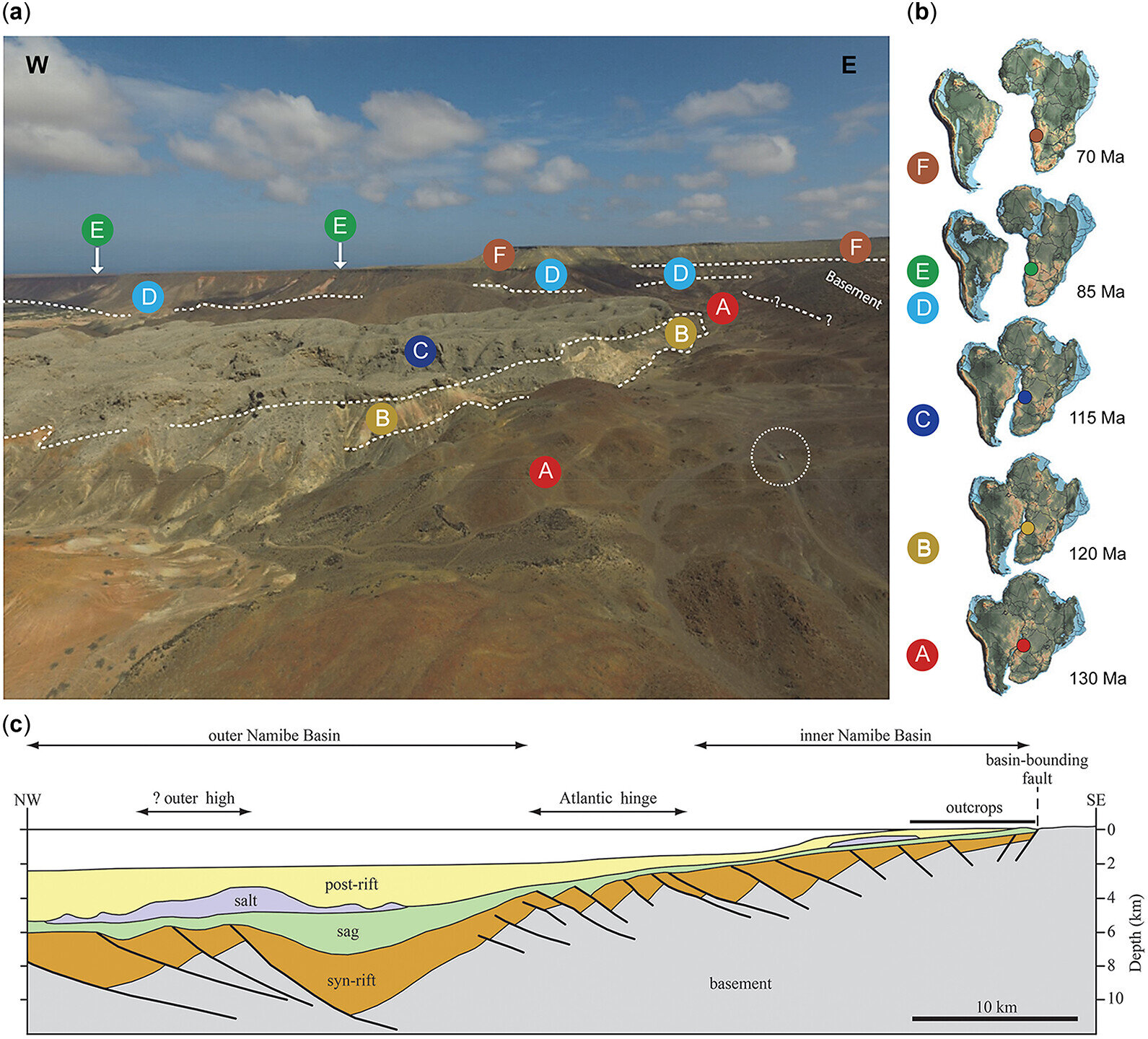Science
Related: About this forumRock solid evidence: Angola geology reveals prehistoric split between South America and Africa
MAY 1, 2024
by Southern Methodist University

Namibe Basin, Angola, where the international team of researchers found rocks and fossils from long-extinct marine reptiles. The different letters correspond to different times during the splitting of South America and Africa and the subsequent formation of the South Atlantic Ocean. The researchers determined this based on what was found at each location. (Bottom) A diagrammatic seismic line through the central part of the Namibe Basin to illustrate the onshore and offshore structure of the basin. Credit: Geological Society, London, Special Publications (2024). DOI: 10.1144/SP543-2022-301
An SMU-led research team has found that ancient rocks and fossils from long-extinct marine reptiles in Angola clearly show a key part of Earth's past—the splitting of South America and Africa and the subsequent formation of the South Atlantic Ocean.
With their easily visualized "jigsaw-puzzle fit," it has long been known that the western coast of Africa and the eastern coast of South America once nestled together in the supercontinent Gondwana—which broke off from the larger landmass of Pangea.
The research team says the southern coast of Angola, where they dug up the samples, arguably provides the most complete geological record ever recorded on land of the two continents moving apart and the opening of the South Atlantic Ocean. Rocks and fossils found date back from 130 million years ago to 71 million years.
"There are places that you can go to in South America, for instance, where you can see this part of the split or that part of it, but in Angola, it's all laid out in one place," said Louis L. Jacobs, SMU professor emeritus of Earth Sciences and president of ISEM.
More:
https://phys.org/news/2024-05-solid-evidence-angola-geology-reveals.html
2naSalit
(92,705 posts)It makes sense since North America split off from Europe, New England shares geologic history with the UK.
JoseBalow
(5,170 posts)lastlib
(24,910 posts)(